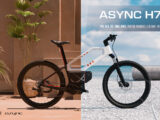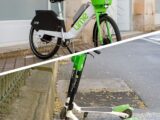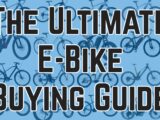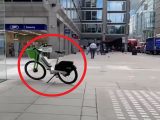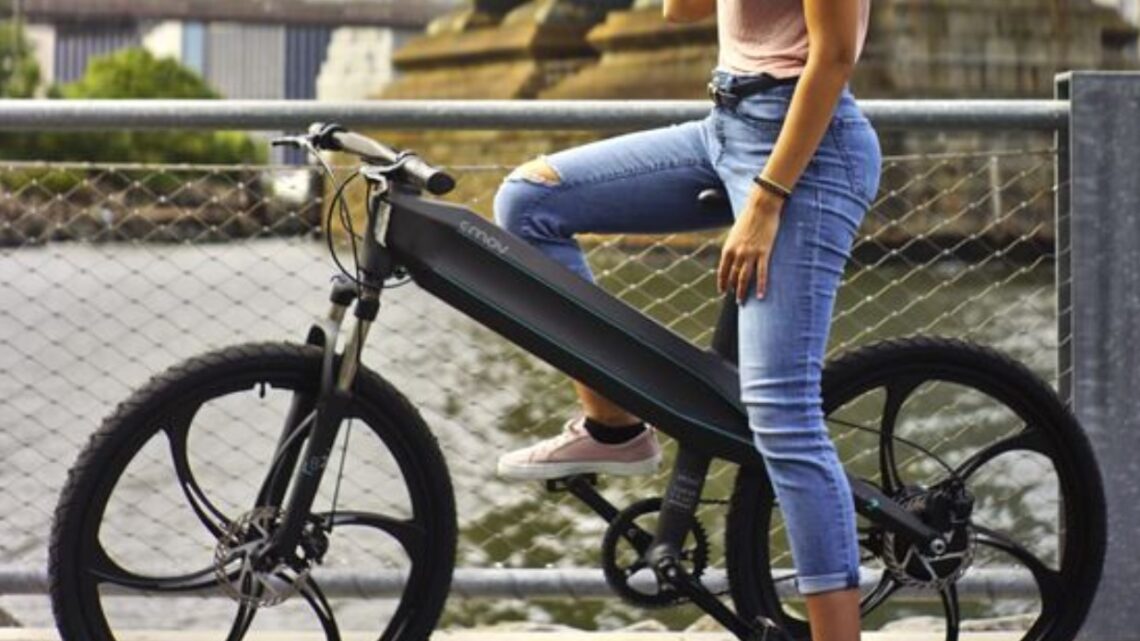
What Does the Rise of E-bikes Mean for Cycling?
October 31, 2022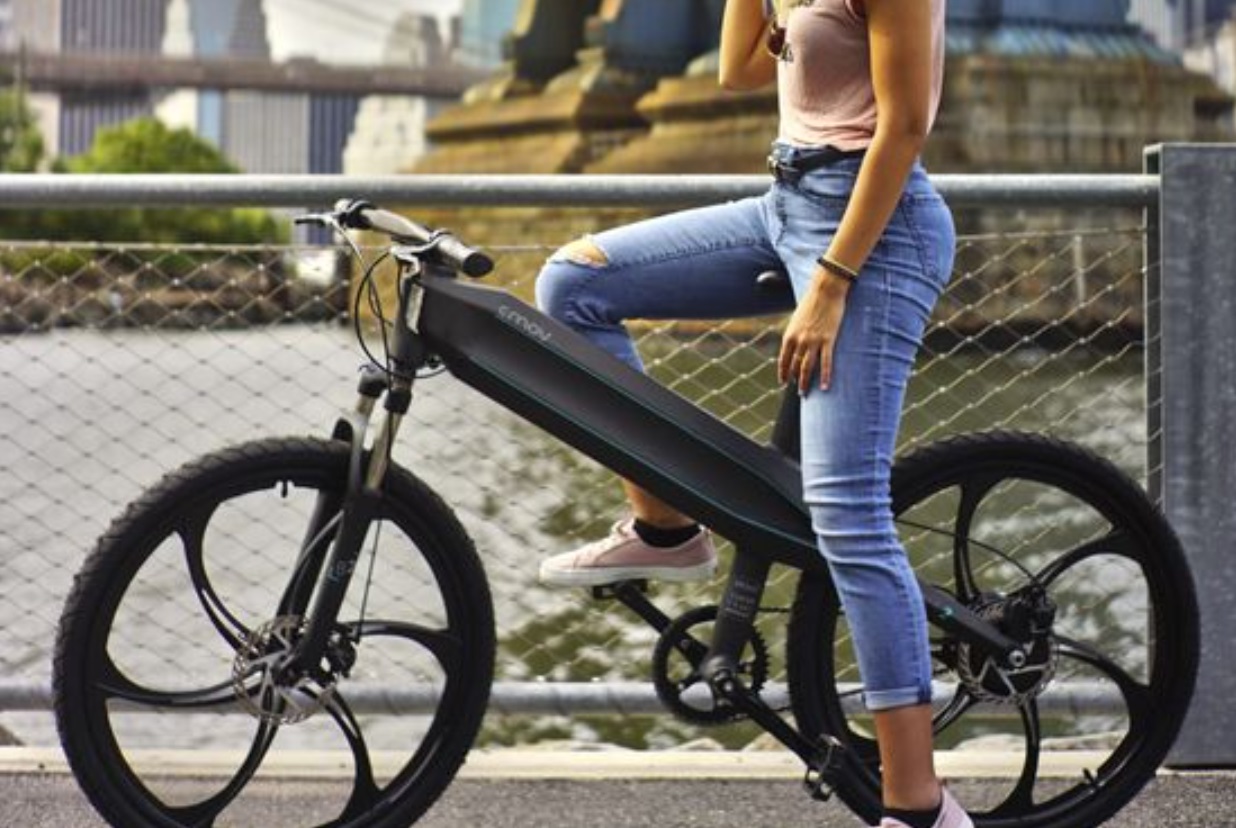
It’s easy to draw a line in the sand, to see the e-bike issue in black and white. Too easy, really, to put the e-bike, which has a small electric motor, in the ‘motorized’ category, ban it from trails and bike lanes and paved paths, and call it a day. But the issue is not black and white.
The debate over the e-bike’s place in the clan of cycling comes down to definitions. Define trail. Define equality. Define assist. Define safety. Define bicycle. Define cyclist!
Does the bike embody minimalism or technology? Is complete reliance on human power irrefutably essential to the experience, or are two wheels and a set of pedals enough? Do electric-assist bikes belong on singletrack? What about bike paths? Trails? Bike lanes?
Define the definitions until you have something definitive. Define them until you can answer one very simple question: Do e-bikes belong?
Define: E-bike
The definition of an e-bike is somewhat fluid, but for the purposes of this discussion, it can be outlined as an electric motor-assisted bicycle. The motor assists in pedalling rather than replacing it and it complies to all UK laws and regulations.
But what about e-bikes that have 500w motors, but are still speed-limited to 15.5MPH? Are those not e-bikes? Are 750 watts far too powerful for UK cycle tracks? Once you stick a throttle on that said 250w e-bike does it then become an e-moped? No, no it does not, so trying to define what an e-bike really all depends on who you ask.

Define: Cyclist
In a sport that glorifies suffering, solitude, and pure hardheadedness, the concept of a motor pushing one forward is an existential attack on deeply held values.
It is the natural reaction of most cyclists to scoff at e-assisted bicycles. A hardcore cyclist rides because it is a purely physical endeavour — a way to go fast all under our own power. Cycling is a way to lose weight, gain fitness, and test ourselves. Adding a motor spits in the face of all of those goals.
Cyclists think of motorized bikes and imagine the Sunday road ride being pulled around by some joker on a mountain bike, pushed along by a motor with the power of Mark Cavendish. But the reality is far from that — the reality is that e-bikes are not aimed at the Sunday group-ride crowds. They’re aimed at people who, until now, have avoided the bike completely.
E-bikes are a way to bring the non-athletic onto two wheels. The technology’s foundations lie in a desire to ease the daily commute. The reality is that most of the people who are interested in e-bikes are just interested in having a nice leisurely ride in a natural setting. They are not in a rush and don’t plan to send the bike downhill at great speed.
This is an important distinction: E-bikes aren’t for the avid cyclist; they’re for the casual ones or the potential cyclist that currently doesn’t ride at all. Perhaps e-bikes can begin to turn those non-riders into normal bike riders over time.
The e-bike is, potentially, a powerful source of equalisation. But the question remains: if you’re on an e-bike, and the battery is aiding in a good portion of your forward movement, are you actually riding? Are you a cyclist? Should you be allowed the rights of a cyclist, on roads and paths and trails?
E-bikes have the potential to put more people on two wheels is unquestionable. That these riders should be classified identically to those who move under their own power is not.
Define: Trail access
In November 2015 the Moab field office of the Bureau of Land Management, the federal agency which administers more than 247.3 million acres of public lands across the United States, made a landmark and potentiality precedent-setting decision for the mountain biking Mecca: E-bikes would be classified as motorized vehicles and, thus, restricted to motorized trails. That means no e-bikes on key sections of the trials.
This falls in line with the verdict of the International Mountain Bike Association (IMBA), the world’s foremost trail advocacy group. IMBA has drawn a bold, black line between motorized and non-motorized transport. It has called for a ban on e-assist motors on trails designated for non-motorized access.
IMBA and other mountain-bike groups have for decades fought for access to trail systems, struggling against hikers and equestrians and land managers who see mountain bikes as fast, rude, destructive trail users. There have been great victories as well as sad losses. Through it all, the bicycle has been defined as a human-powered technology. That definition has proven invaluable in the fight for increased access.
The concern is that adding motor-assisted riding will upset the tenuous balance between cyclists and other trail users. It will put more riders, many of whom will be new to the sport and unlikely to be well-versed in trail etiquette, on trail systems that already see conflict. They will be riding faster than their skills would otherwise allow. They may injure themselves, or someone else. If complaints arise, land managers could shut out not just e-bikes, but all bikes.
The e-bike, in short, could undo everything that mountain bikers have worked so hard for. This is why organizations like IMBA have a sharp delineation between human-powered and motor-assisted bikes, for now.
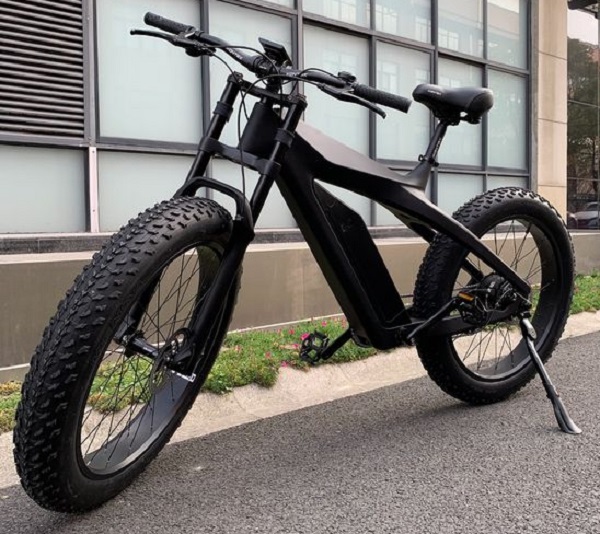
Define: Paved access
Despite concerns over trail access issues, it is use on roads, bike lanes, bike paths and paved trails that is the primary focus of e-bikes today. Most e-bikes sold in 2021 were e-cargo bikes or commuter road bikes.
E-bikes are a potential safety issue in these areas. In China, where e-bikes have taken off in the last decade — and where regulations remain weak and full of loopholes — e-bike-related fatalities increased from 34 in 2001 to 2,469 in 2007.
Many of China’s e-bikes are throttle-actuated, defined as bikes thanks only to a pair of pedals that are rarely used. But even pedal-assist models can send a rider up the road at speeds that far exceed all but the fittest road cyclist — speeds that drivers of cars aren’t expecting and speeds that other riders in the bike lane certainly aren’t ready for.
Road cyclists know how dangerous cars can be. We live it, every minute of every ride, our survival skills carefully honed over years. We know how our own speed adds danger to the equation, how the driver making a left turn across our lane doesn’t expect a cyclist to be cruising at 20 miles per hour. We’re careful, and we still get hit.
Will the new e-bike rider, who is arguably less experienced at navigating the perils of the road, be as careful? Will cars become used to idly spinning cyclists rocketing down bike lanes?
Accidents will happen. They already do, without electronic assistance. But an increase in accidents has the potential to turn cities and states off of the concept entirely; poorly behaved cyclists have the potential to fuel the anger many drivers already feel towards those on two wheels.
Define: Progress
The arguments against the e-bike’s inclusion in the cycling community are the same arguments that have been used for years against the pedal-powered cycling clique. We’re too fast, too dangerous, too reckless; we get in the way of cars, we buzz joggers on the bike path and we scare hikers and horses on single lanes. These characterisations are unfair, blossoming out of anecdotes and a handful of bad apples, yet we level the same at e-bikes without shame: They’ll be too fast, they’ll buzz us on the bike path, they’ll scare us on the singletrack, they’re not safe in traffic.
These concerns are, frankly, nonsense. Just as most mountain bikers are courteous trail users, most e-bike users will likely be courteous bike path riders. But that doesn’t mean e-bikes get a free pass. The word of the moment, then, is patience.
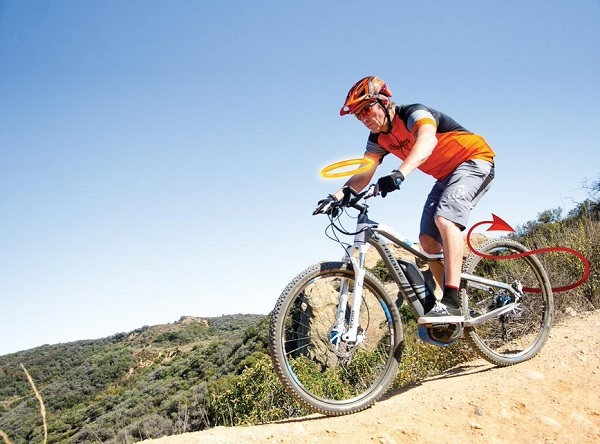
The e-bike is not evil, nor is it a saviour for cycling and the cycling industry. As the movement progresses, our niche community must balance the desire to increase our ranks, and to support the industry, with responsible growth and an understanding that e-assisted riding and pedal-powered riding are, fundamentally, not the same activity. They may look similar, and take place in the same areas, but regulations and rules will need to be updated and adapted to cycling’s new look, and newfound speed.
If cyclists are honest they simply don’t like the idea of someone taking the easy way to the top. It doesn’t feel like cycling. But it doesn’t have to and e-bikes are not a replacement for normal bikes, they are a tool to enable more people to get into cycling and that should be welcomed by everyone, not just other cyclists.
The original article is from – https://www.velonews.com/assisted-living-what-does-the-rise-of-e-bikes-mean-for-cycling/ – do check them out and share the article there.




